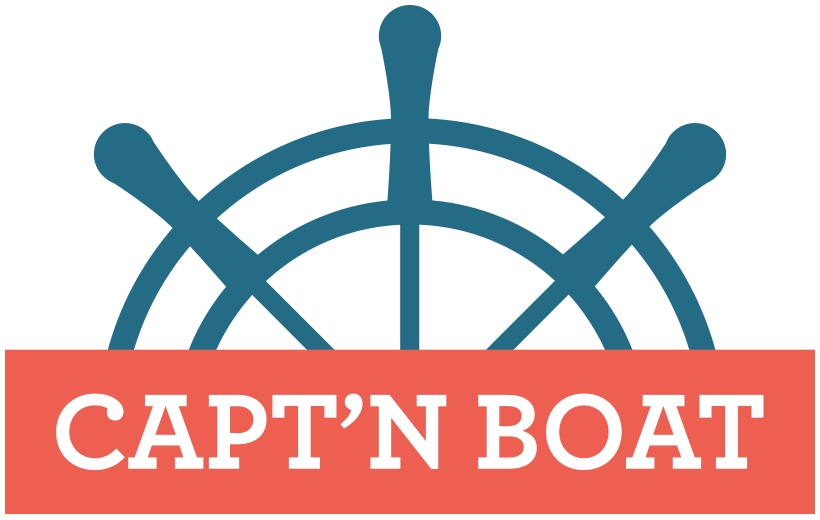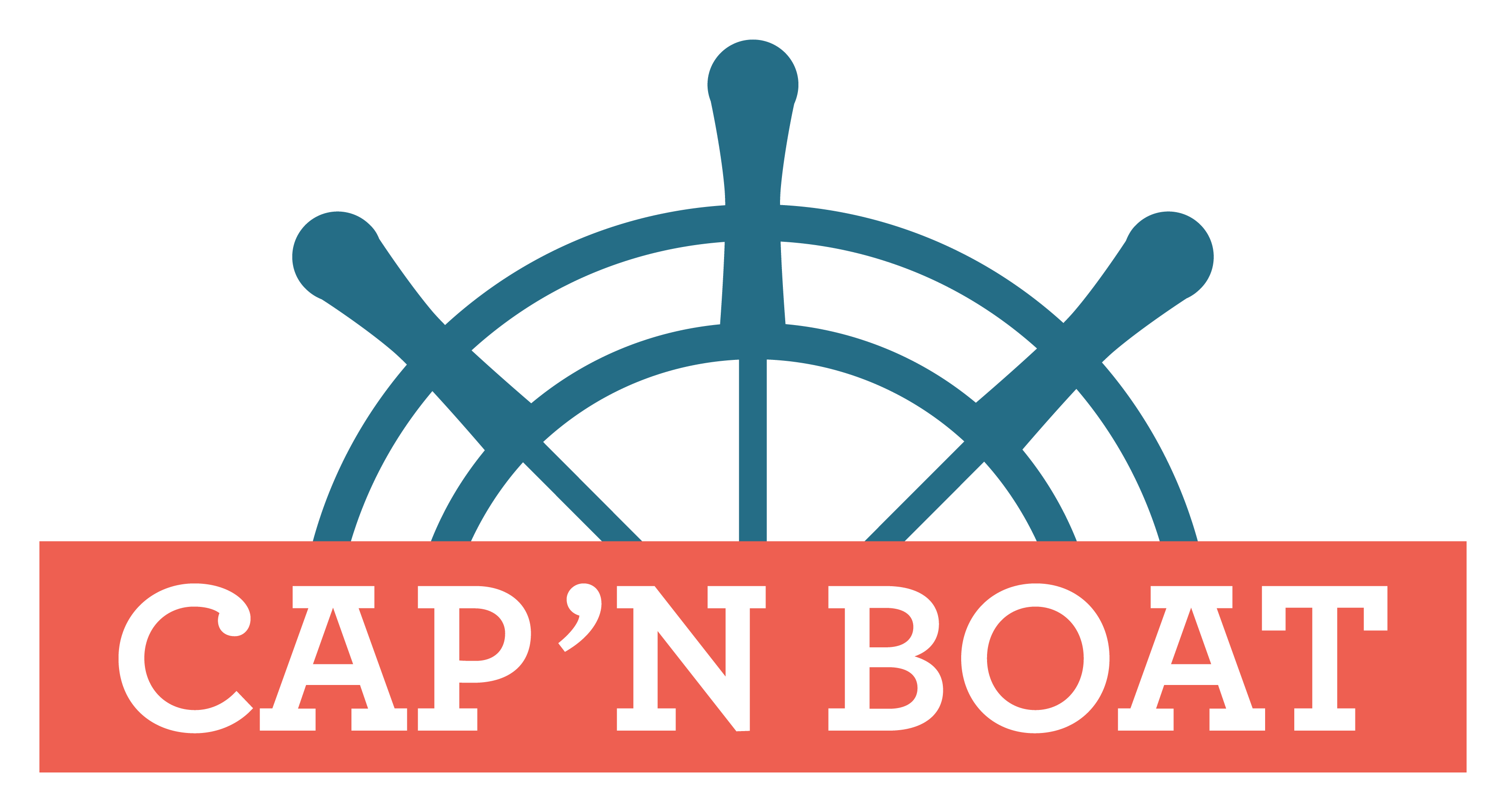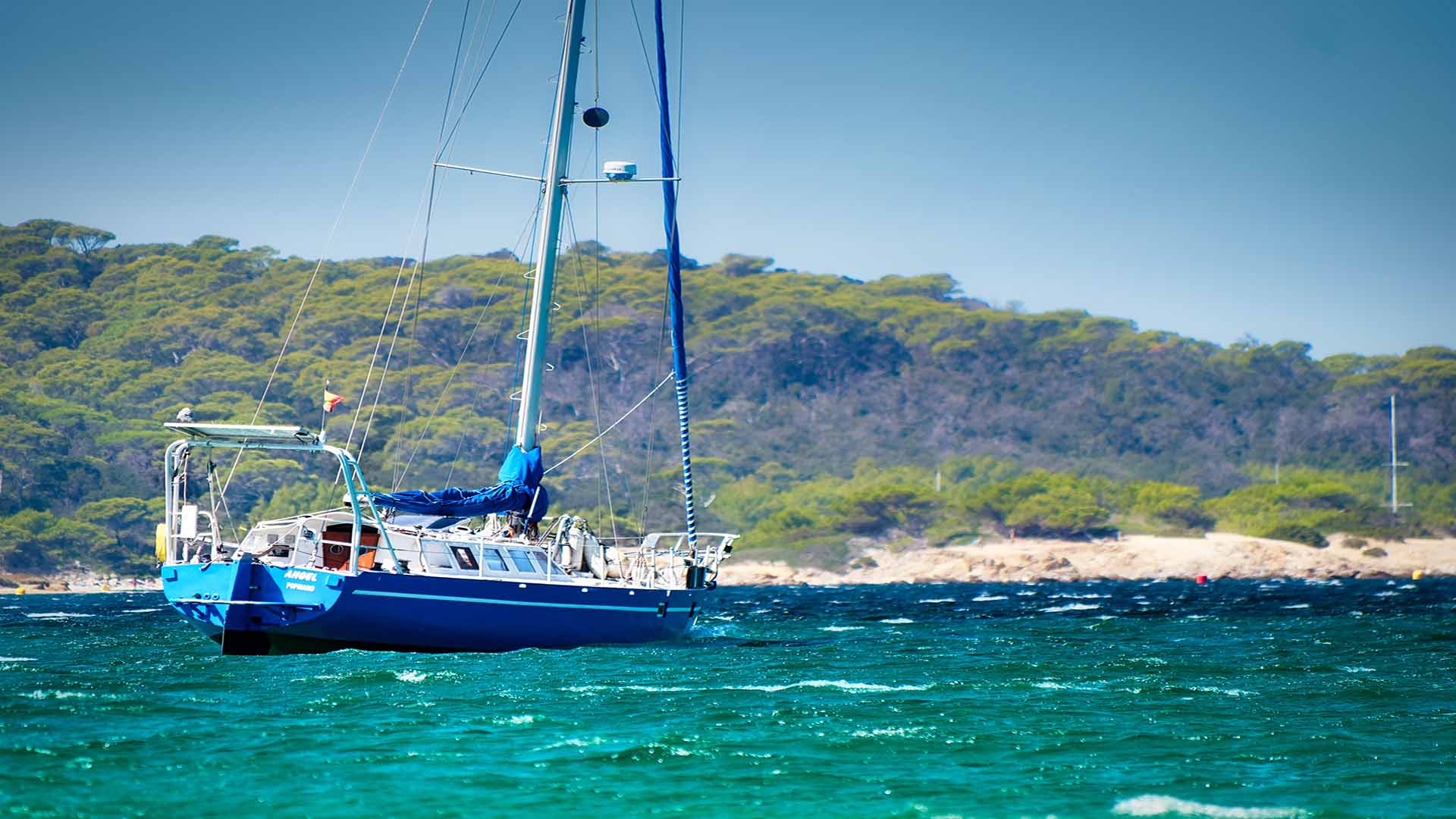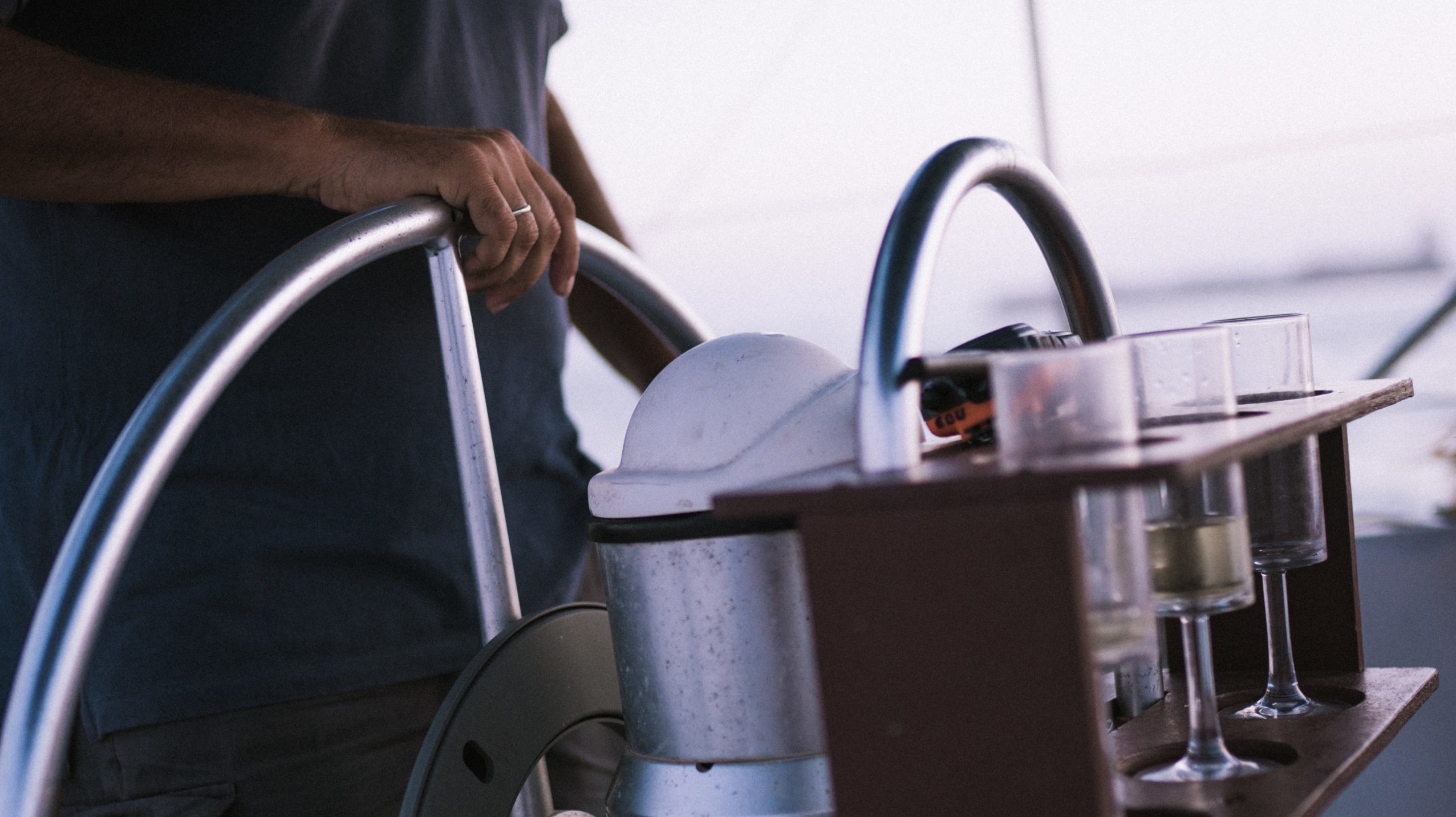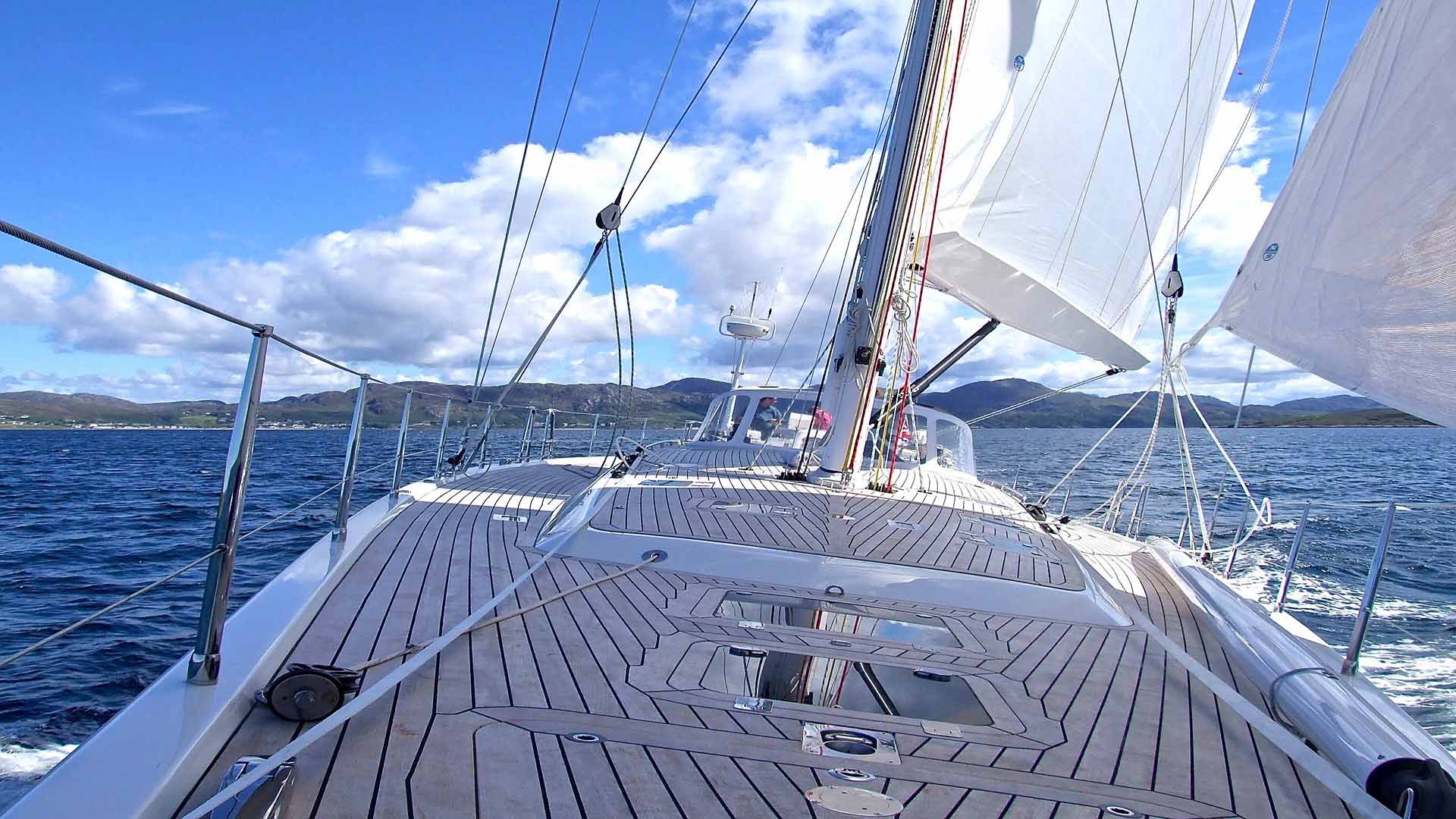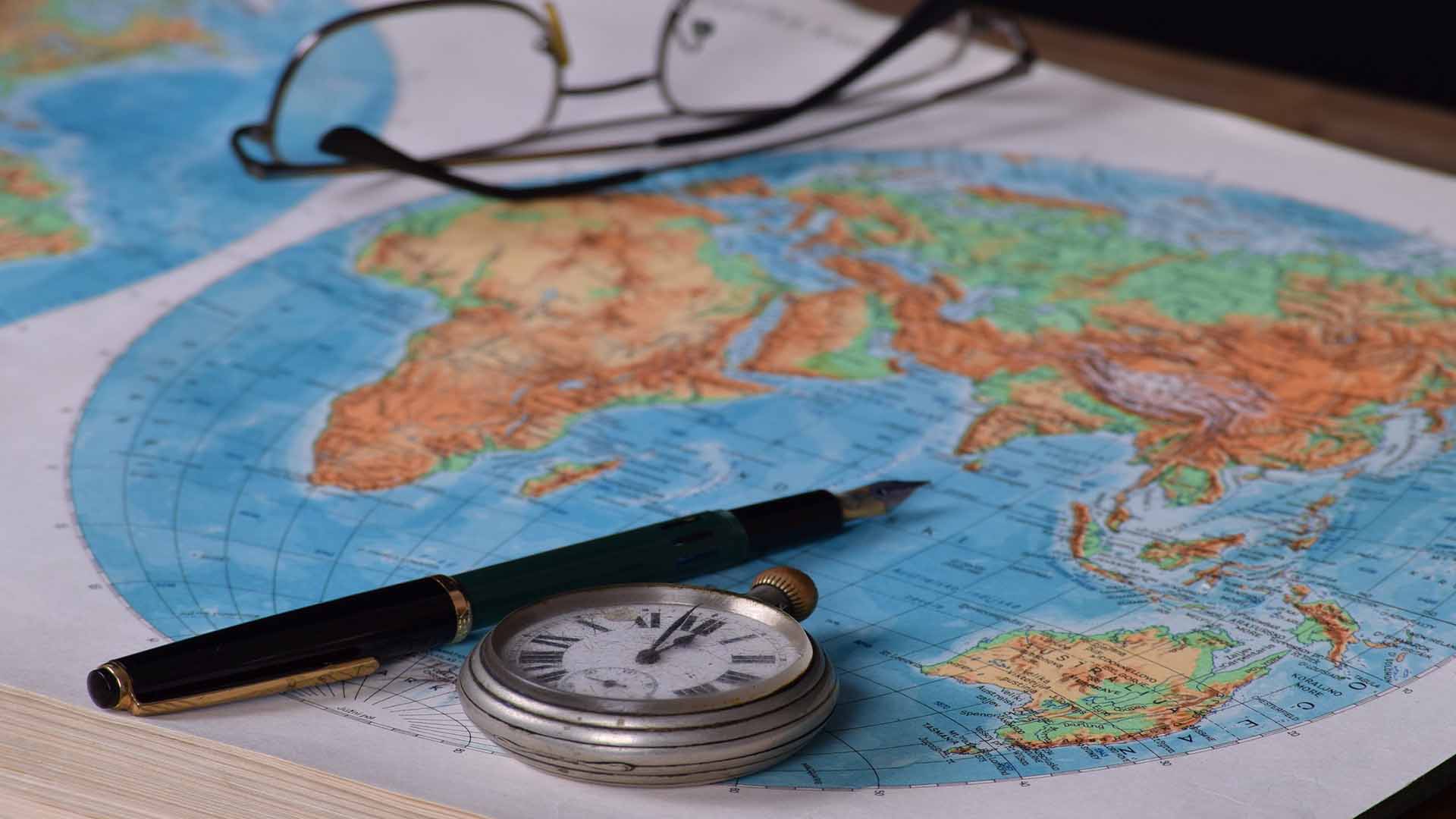
Master 200 GT: the gateway between the Yachtmaster and the Captain 200
Yachtmaster holders can, by using the Master 200 GT oral exam gateway, claim a visa recognition from France giving them the same prerogatives as a Captain 200 (french degree).
The Yachtmaster is a British certificate, issued by the Royal Association Yachting (RYA).
The United Kingdom being a signatory to the STCW Convention, it can issue the title of Yachtmaster STCW Endorsed. In theory, if the Yachtmaster title is “STCW Endorsed”, the skipper will be able to obtain the benefit of the STCW titles recognition between signatory states of the STCW Convention, subject to obtaining a recognition visa or to the establishment of a bilateral recognition agreement between countries.
However, France (signatory of the STCW convention) does not recognize the “STCW Endorsed” Yachtmaster as such and therefore does not issue any visa recognition. Skippers who have it are, therefore, not allowed to sail on a boat waving the French flag. This can be a source of frustration for skippers who are denied employment opportunities.
To allow Yachtmaster holders to operate on French boats, they need to obtain a new certificate: the MCA Master 200 GT; which is recognized by France and can be subject to a visa recognition.
With a Yachtmaster, the Master 200 GT certificate is easily obtainable.
The Master 200 GT is the bridge between the Yachtmaster and the Captain 200. Without a Master GT MCA, it is impossible to get a visa recognition from France.
1. What is the MCA Master 200 GT?
The Master 200 GT is an English STCW certificate recognized by France through the issuance of a visa recognition.
The MCA Master 200 GT is very similar to the Yachtmaster Offshore. Therefore, it can be used by skippers on vessels up to 200 GT or by watchkeeping officers on vessels up to 500 GT.
The Master 200 GT can be “Limited”, allowing use up to 150 Nm offshore, or “Unlimited” for use without distance limits.
Skippers must complete their diploma with a GMDSS certificate. This can be either a GMDSS ROC (Restricted Operator Certificate) which limits the activity in GMDSS Zone A1, or a GMDSS GOC (General Operator Certificate) which allows an unlimited use.
A number of prerequisites are required from the seaman who wishes to obtain this gateway, as follows.
2. Obtaining the complementary MCA Master 200 GT exam
A. Prerequisites to obtain this gateway
First of all, to be able to use this bridge between the Yachtmaster and the Master 200 GT, some prerequisites are necessary:
- Be over 18 years old
- To have completed 6 months of sea service with a RYA Yachtmaster, or IYT Master of Yacht limited
- To hold an offshore RYA Yachtmaster or a commercially endorsed IYT Master of Yacht limited
- Have a valid ENG1 medical certificate
- Have the BST including the different mandatory STCW elements:
- Individual Survival Techniques (IST)
- Basic firefighting training
- Basic first aid (EM 1)
- Life safety and social responsibilities
- Operator certification: GMDSS ROC or GOC
- Have the HELM (Human Element, Leadership & Management) operational certificate
- Finally, pass the oral exam (see below for the content of the oral exam) of the MCA Master 200 GT. There is no MCA or RYA preparation course for the Master 200 oral exam. The program for the oral is: navigation, IRPCS, meteorology, cartography, business and MarPol law, Bridge procedures, etc.
In addition, candidates must complete a Notice of Eligibility (NoE) and send it to MCA. It is recommended that you allow at least 28 days before your file is processed. Oral examinations are held at the MCA offices.
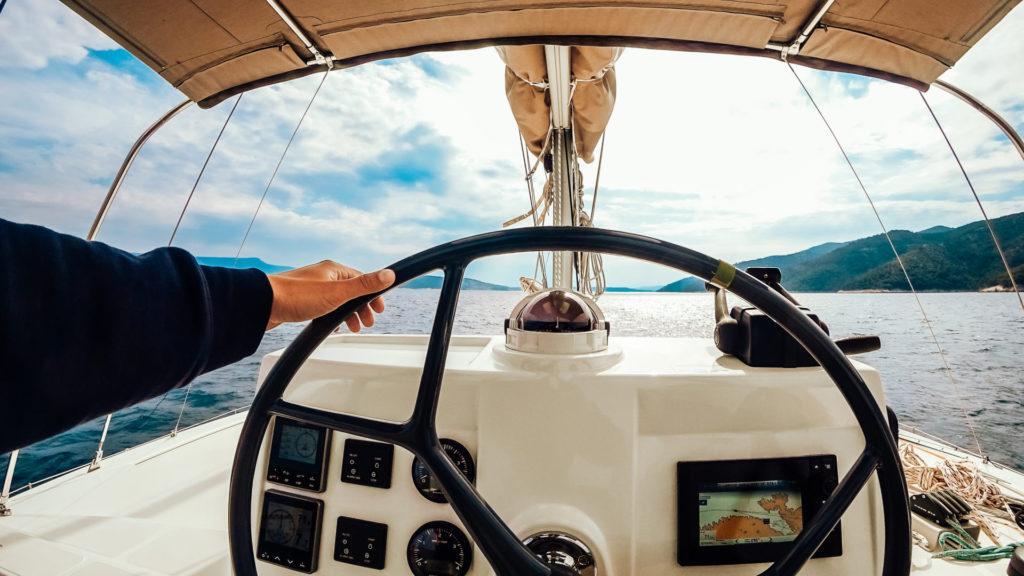
B. Content of the Master 200 GT oral exam:
More specifically, and to put all the chances on your side, here is a summary of the content of the MCA Master 200 GT exam.
1. Plan and execute a passage (chart and navigation instructions, light lists, tide tables, radio warnings)
- Be familiar with the IMHA A and B buoyage system
- Identify and analyze the limitations and sources of error of electronic charts and navigation systems
- Know how to use Radar and ARPA (practical use, mode of operation, limitations and sources of error, including basic radar plotting techniques)
- Know the application of variation and deviation to convert true heading to compass heading, and understand the basic causes of variation and deviation
- Locate the ship’s position on the chart based on magnetic bearings and/or radar ranges, position by latitude and longitude
- Find the magnetic heading to steer and the ETA for a given destination given the starting position and recording speed
- Identify transits and chart trim marks to plan a safe approach to a port or anchorage
- State and explain the meaning of common chart symbols and abbreviations
- Know how to obtain and use weekly Notices to Mariners to correct charts
- Research high and low water times and predict heights and/or intermediate times for standard and secondary ports
- Find and predict tidal range and rate from charted tidal reference points, and tidal current atlases
2. Meteorology
- Know the sources of weather information
- Interprete weather forecasts, including knowledge of the characteristics of various weather conditions
- Use and interpret information obtained from on-board weather indications
3. Maintain a safe navigation watch
- Demonstrate a thorough knowledge of the principles of marine navigation monitoring, including anchor monitoring; such as STCW Code A-VIII and ICS Bridge Procedures Guide
- Understand the use of bridge equipment including echo sounder and Navtex
- Be familiar with steering control systems, including autopilot and operation from manual to automatic control and vice versa
- Maintain navigation records
- Know the circumstances under which the captain should be called to the bridge
- Know the principles of handing over and relieving the bridge watch
4. International regulations for preventing collisions at sea (ColRegs)
- Demonstrate a thorough knowledge of ColRegs including the requirements: to proceed at a safe speed, keep an eye out for and recognize lights and shapes, and fog signals for all classes of vessels, recognize audible maneuvering signals and light signals. Recognize a developing collision situation by compass, radar or visual reference
- State the measures to be taken during the day and at night to avoid collisions. Describe precautions to be taken when navigating in or near areas of reduced visibility; evaluate the probability of a radar-only collision of a vessel and the steps to be taken to avoid a collision. Describe the requirements for navigating in or near traffic separation schemes. Describe the need to navigate in narrow channels
- Respond to emergencies, operational safety and pollution control
5. Distress signals and communication
- State the conditions under which distress signals may be used; understand the different types of distress signals, actions to be taken upon receipt, and obligations to assist
- Know the proper use of pyrotechnics, EPIRBS and SARTS, including the appropriate circumstances for their use
- Understand proper distress communication procedures, including the terms Mayday, PanPan and Safety messages
- Emergency communication with GMDSS regulations
6. Vessel manoeuvres
- Know the steps to prepare for departure, tasks before going to sea, docking, entering a dock, berthing alongside docks, piers or other vessels; stowing to buoys
- Know how to use and maintain mooring lines and associated equipment
- Know how to use the rudder, steer the ship, know the effects of propellers on the ship’s direction, the effects of wind and current, stopping, going astern and turning short
- Act in the event of a failure of the deck, telegraph or steering gear control, including emergency steering arrangements
- Know anchoring procedures
- Understand precautions to be taken when using winches and windlasses
- Understand the precautions to be taken when mooring and unmooring
7. Responses to emergencies
Be able to respond to emergencies by adapting the posture according to the different scenarios:
- Initial actions as follows: man overboard, collision, grounding, flooding or major mechanical damage, initial damage assessment and control, marine environmental protection
- Fire prevention, use and maintenance of firefighting apparatus, shutdown and isolation of facilities and equipment, evacuation and breathing apparatus, fire and safety plans
- Operation and maintenance of rescue apparatus and equipment, including immersion suits and thermal protection aids, pyrotechnics, and ammunition launching devices
- Launching of liferafts and rescue boats; proper rigging of liferaft hydrostatic release units
- Basic principles of survival
8. Pollution Prevention Requirements
- Know good pollution prevention practices in ports and at sea, as well as measures to be taken to prevent pollution during bunkering
- Know how to respond to pollution incidents in ports and at sea
- Know the basics of waste management and disposal of waste and oil residues
9. Vessel Navigability
- Understand the fundamentals of watertight integrity and closing all openings, including hatches, access hatches and watertight doors
- Understand the difference between good stability and poor stability, and recognize the warning signs of the latter
- Describe the effect on stability:
- Increasing and decreasing weights
- Low freeboard
- Clogged deck clearances and scuppers
- Loose tanks
- Preparing for weather, ensuring and maintaining watertightness
10. Business and Law
- Understand the content and application of the applicable codes, namely the “Small Vessel Commercial Code 1” and the Large Commercial Yacht Code (LY3) 2
- Be familiar with the Code of Safe Work Practices for Merchant Mariners 3, its content and practical application
- Know the requirements for drills and exercises, including fire, emergency and abandon ship drills
- Understand the legal requirement to insure a seaworthy vessel
- Know the basics of salvage laws
- Understand the requirements for safe manning, hours of work and watchkeeping
- Identify the circumstances under which a vessel requires a crew agreement
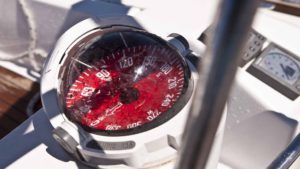
3. Ask for a visa recognition to work in France
Once the Master 200 GT is obtained, the holder can apply for a visa recognition from the competent authority.
The visa recognition attests to the seaman’s competences to perform functions equivalent to his or her certificate in foreign countries.
A. How to apply for a visa recognition?
To obtain a visa recognition, you must put together a file with the following documents:
- The CERFA for visa application, duly completed and signed,
- A copy of your valid seaman’s certificates, approved by the administration of the country of issue (here the Master 200 GT), with the STCW reference of the title,
- A medical check-up, issued within the last 2 years by a doctor authorized by the country of issue of the certificate or by a French seamen’s doctor,
- An identity photo.
B. To whom should the application for a visa recognition be addressed?
The request for a visa recognition must be made by the seaman or the owner of the ship under the French flag on which the sailor, holder of the certificate concerned, is embarked.
This request should be sent to the “employment – maritime training” department of the DIRM (Direction InterRégionale de la Mer) of a DDTM (Direction Départementale des Territoires de la Mer) of the maritime coastline on which the vessel is operating (DIRM-Mediterranean, for example, if the vessel on which the sailor is embarked is operated in one of the departments of the Mediterranean coastline).
To know more about how you can obtain a recognition visa, see our dedicated blog post here.
C. Working in France with a visa recognition
Once the application has been validated and the visa recognition obtained, the French authorities certify that the foreign title held by the seaman corresponds to an equivalent level of function in French regulations.
By issuing this visa, France authorizes the holder to work under the French flag for a limited period of 5 years. If the recognized title expires earlier, the visa recognition will also expire.
The renewal of the visa recognition must be explicitly requested.
Note 1: Obtaining a visa recognition does not entitle the holder to the issuance of the equivalent French title and the related rights under French law. (e.g.: obligation to hold a French title for access to higher education).
Note 2: Obtaining a visa recognition is not sufficient for a foreign sailor to be able to command a French vessel. For this specific function, the foreign sailor must also be evaluated by a national jury. This national jury, presided over by the DIRM in its “commercial” formation, will examine the officer’s knowledge of the French language and national maritime regulations.
Conclusion
In summary, to work in France or under the French flag, the holder of a Yachtmaster STCW Endorsed must:
✅ Obtain the Master 200 GT by validating the Master 200 GT oral exam
✅ Once the Master 200 GT is obtained, apply for a visa recognition from the competent authority.
✅ When the visa recognition is issued to the seaman, he can then practice for 5 years in France.
Not too much of a headache?
If you are interested in this article, we recommend you to suscribe to our newsletter special seamen to stay informed!
 CaptnBoat.com
CaptnBoat.com